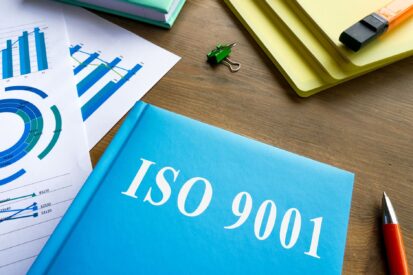Quality management is a crucial aspect of any business, regardless of size or industry. In a highly competitive marketplace, businesses must maintain high standards and deliver quality products and services to their customers. This is where ISO 9001 comes in.
ISO 9001 is a globally recognised quality management standard that provides businesses with a framework for implementing and maintaining a quality management system (QMS). This article will demystify the ISO 9001 requirements checklist by providing a guide for quality managers and business owners.
What Is ISO 9001?
ISO 9001 is a quality management standard developed by the International Organisation for Standardisation (ISO). The standard was first published in 1987 and has been revised several times since then, with the latest version being ISO 9001:2015.
ISO 9001 is designed to help businesses implement a QMS that focuses on customer satisfaction, continuous improvement, and effective processes.
What Are the Benefits of ISO 9001?
Implementing ISO 9001 can provide a range of benefits for businesses, including:
Improved Customer Satisfaction: ISO 9001 certification requires businesses to focus on meeting customer needs and expectations, which can lead to increased customer satisfaction.
Boosted Profitability: The certification can help businesses reduce costs and increase profitability by improving efficiency and effectiveness.
Competitive Advantage: As a globally recognised standard, implementing ISO 9001 can give businesses a competitive advantage.
What Is the ISO 9001 Audit Requirements Checklist?
The ISO 9001 requirements checklist is a tool that businesses can use to ensure they are meeting the requirements of the ISO 9001 standard. The checklist is divided into ten sections, each corresponding to a specific standard requirement. These sections are:
- Context of the Organisation
- Leadership
- Planning
- Support
- Operation
- Performance Evaluation
- Improvement
Let’s explore each of these sections in more detail:
Section 1: Context of the Organisation
This section requires businesses to determine the internal and external factors affecting their QMS and the needs and expectations of interested parties, including customers, employees, and suppliers. Businesses must also determine the scope of the QMS and define the boundaries and applicability of the standard.
Section 2: Leadership
This section requires businesses to demonstrate leadership and commitment to the QMS. This includes establishing a quality policy, assigning responsibilities and authority, and promoting a quality culture.
Section 3: Planning
This section requires businesses to establish and implement a process for risk management and to set quality objectives and plans for achieving them. Businesses must also establish a process for managing changes to the QMS.
Section 4: Support
This section requires businesses to provide the necessary resources and support for the QMS, including human resources, infrastructure, and the environment. Businesses must also establish and maintain a process for controlling documents and records and ensure that their employees are competent.
Section 5: Operation
This section requires businesses to establish and maintain effective processes for the delivery of products and services, including design and development, production, and service delivery. Businesses must also establish and maintain a process for managing nonconformities and corrective actions.
Section 6: Performance Evaluation
This section requires businesses to establish and maintain a process for monitoring and measuring the QMS and to analyse and evaluate the results. It includes conducting internal audits and management reviews.
Section 7: Improvement
This section requires businesses to establish and maintain a process for continuous improvement of the QMS. This includes taking corrective and preventive actions and identifying opportunities for improvement.
How to Use the ISO 9001 Requirements Checklist
Using the ISO 9001 requirements checklist can help businesses meet the standard’s requirements and maintain an effective QMS. The checklist can be used in several ways:
Self-assessment: Organisations can use the checklist to self-assess their QMS and identify areas for improvement.
Auditing: The checklist helps to prepare for an internal or external audit and ensure they meet the standard’s requirements.
Continuous Improvement: The checklist can be used to find areas for improvement and set up a plan for ongoing improvement.
Conclusion
ISO 9001 audit requirements checklist is an essential tool to ensure that organisations meet the requirements of ISO 9001. It is recommended that organisations use the checklist to ensure compliance with the ISO 9001 standard and to help identify areas for improvement.
ISO 9001 Consultants are one of the leading ISO standards consulting organisation in Australia. Our expert team of ISO consultants specialises in developing and implementing management systems aligned with international standards, so you can be sure that your business is operating at the highest level. Get in touch with us to know more about the ISO 9001 audit requirements!








Users Comments
Get a
Quote